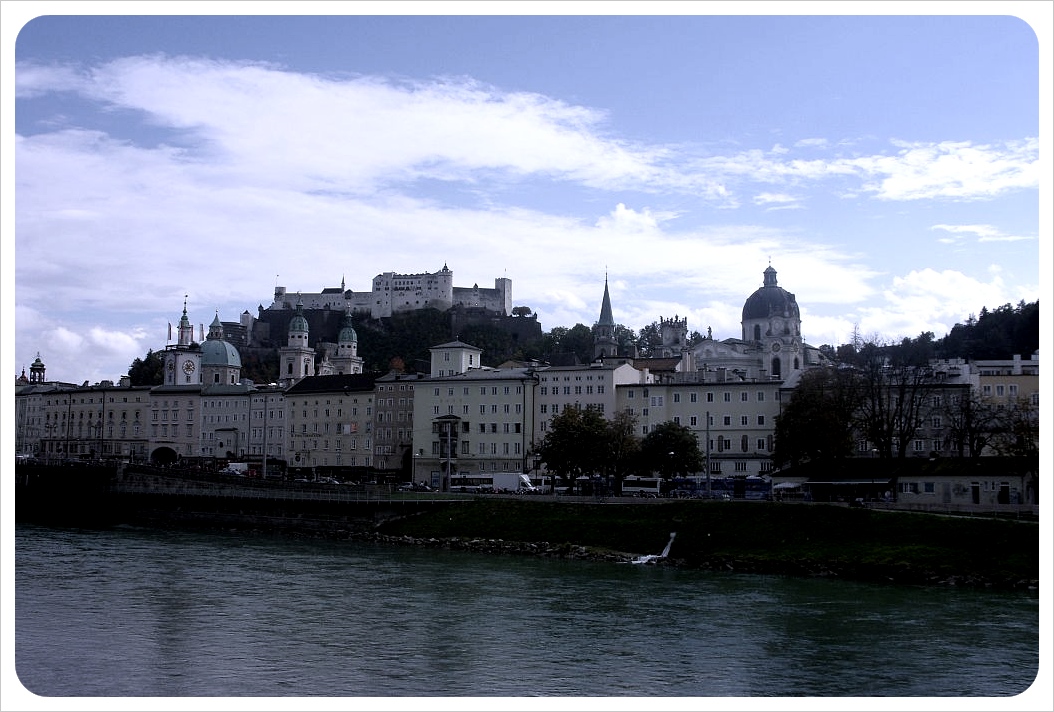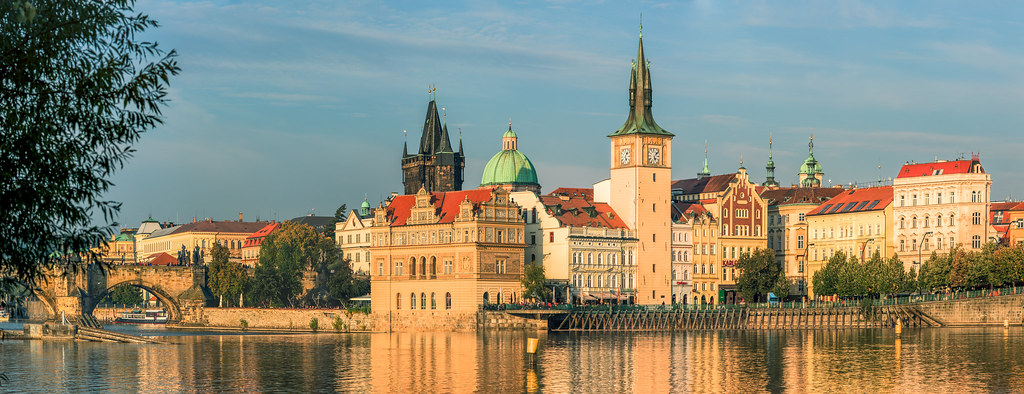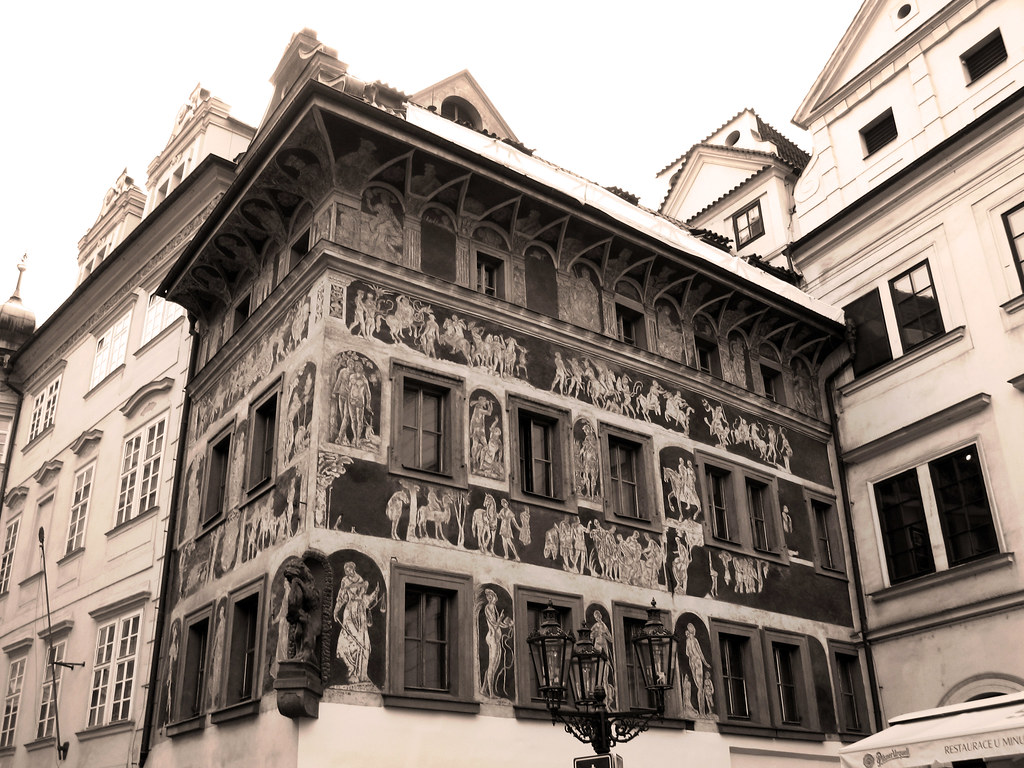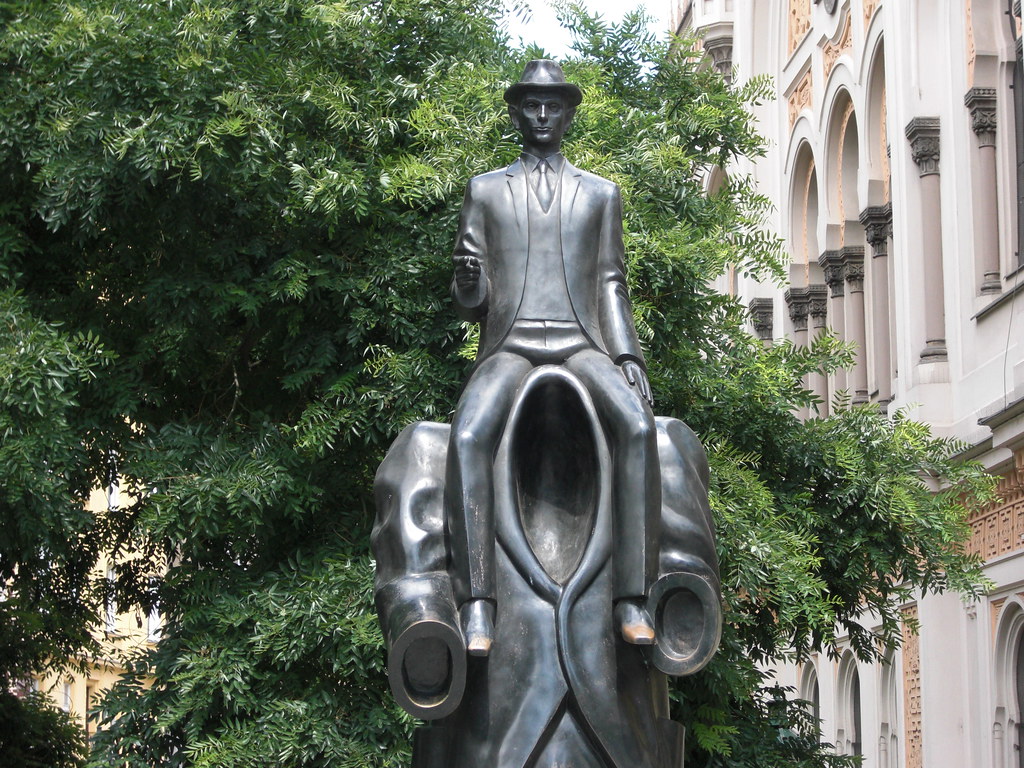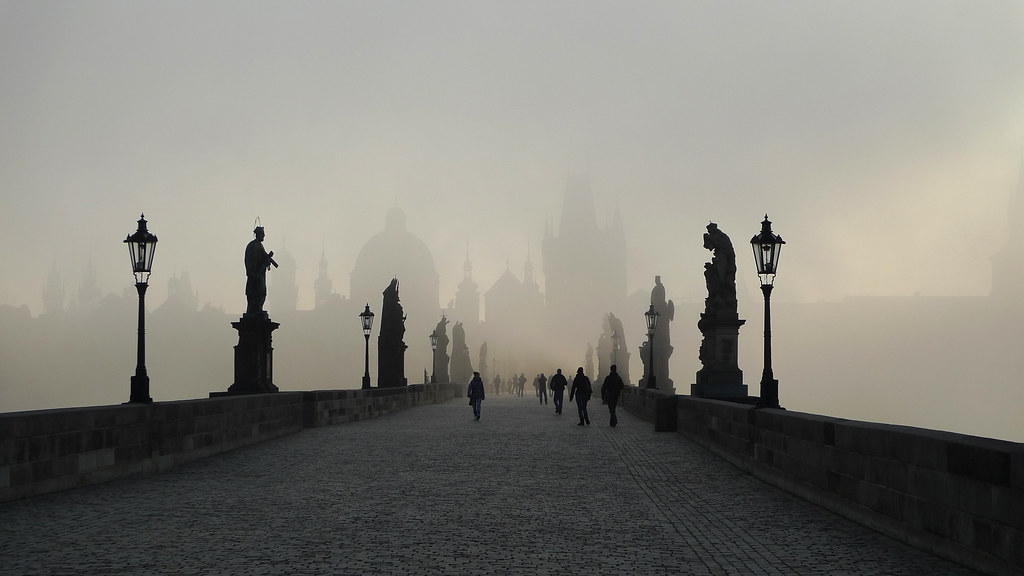Last Updated on June 26, 2023
Today’s guest post takes us to Prague (one of my favorite cities in Europe), and more specifically, where you can trace Kafka in Prague. Franz Kafka was one of the most remarkable German-language writers of the 20th century. My guest writer Olivia Herriot shares with us some of Prague’s Kafkaesque sights. Olivia is based in the UK and spends her time juggling a part-time office job with freelance travel writing. She is currently planning a working trip around Russia.
Who was Franz Kafka?
Born in Prague, Austria-Hungary in 1883, Franz Kafka went on to become one of the most influential authors of the 20th Century. His existentialist themes have inspired a number of great writers, from Camus to Borges, Jean-Paul Sartre to J.D. Salinger, and it’s pretty much impossible to talk about any dystopian literature without throwing around the term ‘Kafkaesque’. For fans of Kafka’s work, one of the best ways to understand the man behind the words is to tour the old haunts around his native Prague.
City breaks to Prague tend to follow a typical pattern: touring the Old Town, marveling at the beautiful cathedrals, walking around the Castle District and seeing an opera or symphony performance in the evening. However, if you’re in the mood for something a bit different for your Prague trip, a Kafkaesque tour of the city won’t disappoint. Here is where you have to go to find a piece of Kafka in Prague:
Kafka in Prague: Where to go & what to see
Kafka’s Birthplace
If you”re hunting down Franz Kafka in Prague, you obviously have to visit the house where he was born. The site, called Náměstí Franze Kafky, is situated in the city’s Old Town, at Ul. Radnice 5. Although the doorway is the only remaining part of the original building where Kafka was born, there’s a unique monument standing outside (the ultimate photo-op for Kafka fans).
Kafka Museum
Get to know more about the brilliant author in this museum, dedicated to sharing his fascinating life story. With photos, original letters, early publications and newspaper clippings from Kafka’s time in Prague, the museum paints a vivid picture of Franz Kafka and the city he called home.
Old-New Synagogue
Kafka’s heritage as a German-speaking Jew living in Prague undoubtedly influenced his writings. For further insight into Kafka’s life, visit the Old-New Synagogue where he had his bar mitzvah. Built in 1270, the Gothic structure is also the oldest active synagogue in Europe.
New Jewish Cemetery
Situated outside the tourist area of Prague, the New Jewish Cemetery is the site of Kafka’s final resting place. Whilst it’s possible to visit Kafka’s grave during any time of the year, the most popular time to pay respects is on 3 June, the anniversary of his death.
Wenceslas Square
Out of Prague’s main, central city squares, Wenceslas Square was where Kafka worked from 1906 to 1907. It was in a building on the corner of Jindřišská that Kafka took up the role of an office clerk for an insurance company. The square, which is named after the patron saint of Bohemia, St. Wenceslas, continues to be one of the city’s main business districts.
Café Louvre
Kafka wasn’t the only famous face to have been seen enjoying a meal in this Old Town cafe. Albert Einstein is also known to have visited it on occasion. The cafe was first opened in 1902 and, after its reopening in 1992, it continues to be a popular local hangout.
For fans of Franz Kafka, or literature in general, tracing Kafka in Prague is a particularly interesting way to view the city. Rather than picking up a generic guidebook, why not let the city’s most famous ‘local’ be your tour guide?
If you haven’t have enough of Kafka in Prague yet, check out the BBC’s Guide to Kafka’s Prague.
Looking to go to Vienna next? Here’s everything you need to know about the train ride from Prague to Vienna.
Images by Jan Fidler, Pablo Sanchez, Sébastien Bertrand and Roman Boed used under creative commons license.

